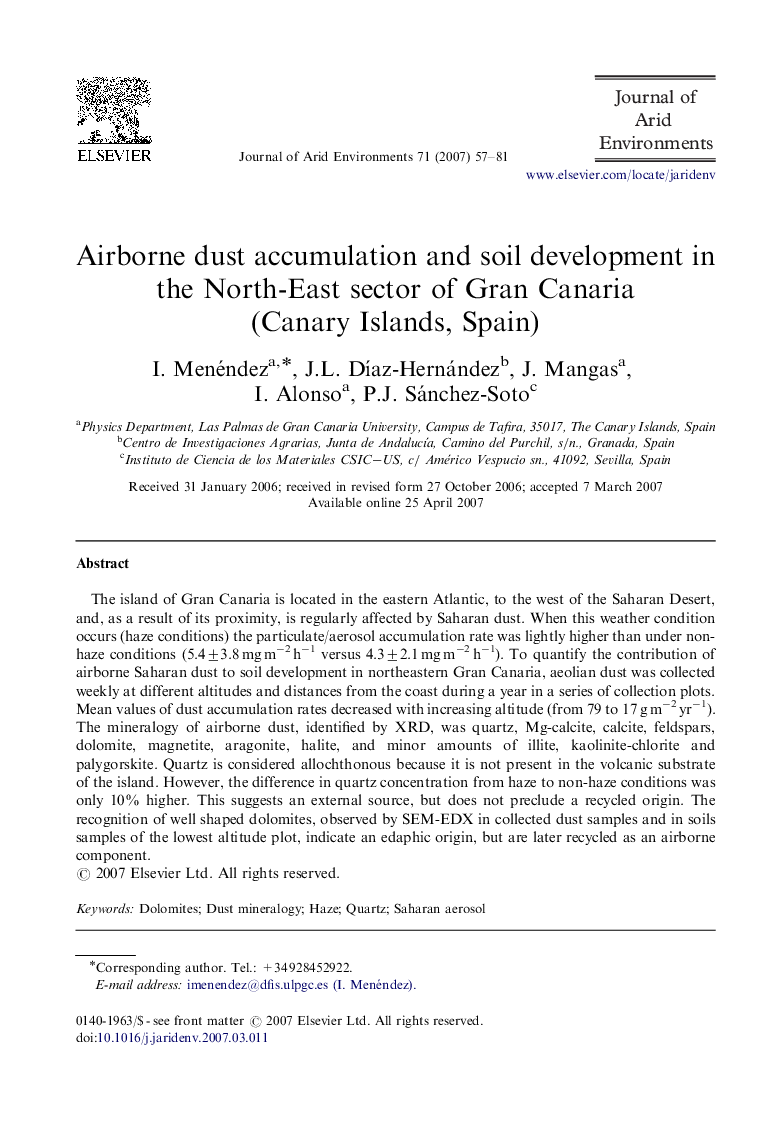| Article ID | Journal | Published Year | Pages | File Type |
|---|---|---|---|---|
| 4394132 | Journal of Arid Environments | 2007 | 25 Pages |
The island of Gran Canaria is located in the eastern Atlantic, to the west of the Saharan Desert, and, as a result of its proximity, is regularly affected by Saharan dust. When this weather condition occurs (haze conditions) the particulate/aerosol accumulation rate was lightly higher than under non-haze conditions (5.4±3.8 mg m−2 h−1 versus 4.3±2.1 mg m−2 h−1). To quantify the contribution of airborne Saharan dust to soil development in northeastern Gran Canaria, aeolian dust was collected weekly at different altitudes and distances from the coast during a year in a series of collection plots. Mean values of dust accumulation rates decreased with increasing altitude (from 79 to 17 g m−2 yr−1). The mineralogy of airborne dust, identified by XRD, was quartz, Mg-calcite, calcite, feldspars, dolomite, magnetite, aragonite, halite, and minor amounts of illite, kaolinite-chlorite and palygorskite. Quartz is considered allochthonous because it is not present in the volcanic substrate of the island. However, the difference in quartz concentration from haze to non-haze conditions was only 10% higher. This suggests an external source, but does not preclude a recycled origin. The recognition of well shaped dolomites, observed by SEM-EDX in collected dust samples and in soils samples of the lowest altitude plot, indicate an edaphic origin, but are later recycled as an airborne component.
